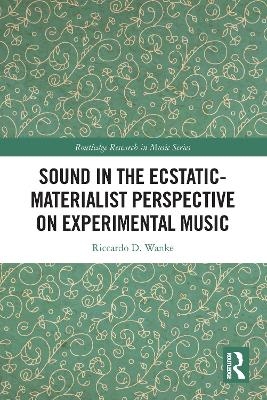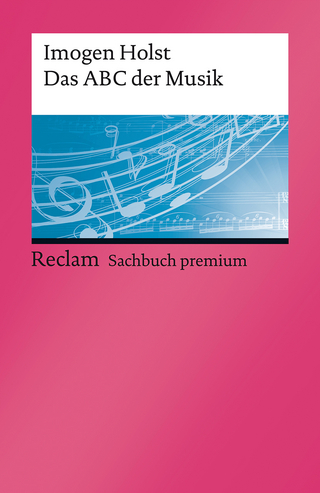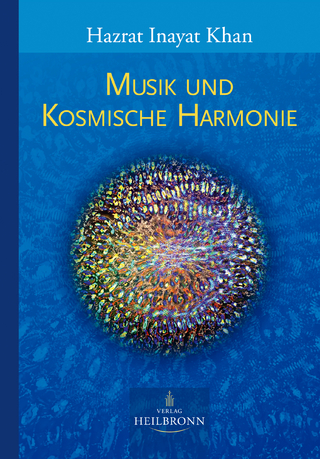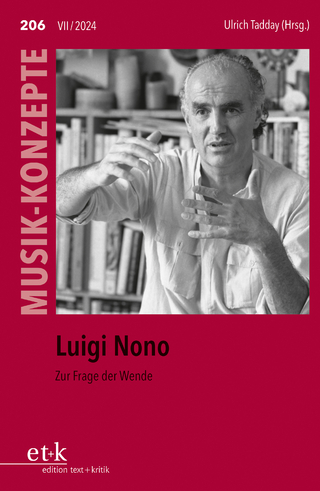
Sound in the Ecstatic-Materialist Perspective on Experimental Music
Routledge (Verlag)
978-0-367-67700-8 (ISBN)
What does a one hour contemporary orchestral piece by Georg Friedrich Haas have in common with a series of glitch-noise electronic tracks by Pan Sonic? This book proposes that, despite their differences, they share a particular understanding of sound that is found across several quite distinct genres of contemporary art music: the ecstatic-materialist perspective. Sound in the ecstatic-materialist perspective is considered as a material mass or element, unfolding in time, encountered by a listener, for whom the experience of that sound exceeds the purely sonic without becoming entirely divorced from its materiality. It is "material" by virtue of the focus on the texture, consistency, and density of sound; it is "ecstatic" in the etymological sense, that is to say that the experience of this sound involves an instability; an inclination to depart from material appearance, an ephemeral and transitory impulse in the very perception of sound to something beyond – but still related to – it. By examining musical pieces from spectralism to electroacoustic domains, from minimalism to glitch electronica and dubstep, this book identifies the key intrinsic characteristics of this musical perspective. To fully account for this perspective on sonic experience, listener feedback and interviews with composers and performers are also incorporated. Sound in the ecstatic-materialist perspective is the common territory where composers, sound artists, performers, and listeners converge.
Riccardo D. Wanke is musician, academic, and member of the Centre for the Study of Sociology and Aesthetics of Music at NOVA University of Lisbon, Portugal. His interests cover experimental music, sound perception, and electronic sound manipulation. He has performed live worldwide and published for international labels.
Introduction
A multifaceted approach
Overview
Remarks and limitations
Notes
1 Sound in 20th-century music
Scelsi and the centrality of sound
Key aspects of sound in the ecstatic-materialist perspective
From music to sound
From the beginning of the century up to 1980: a plural emancipation
Spectral line
Minimalist line
Musique concrète and avant-garde lines
From the 1980s onwards: a non-linear expansion
Sonic map
Case studies: selection of pieces
Closing remarks
Notes
2 Morphology and structure of musical works
Starting points of the analysis
Sequential method
Step 1: Identification of common characteristics and morphologies
Step 2: Identification of common developments (unfolding structures)
Results
Low-level attributes
(A) An expanded spectrum
(B) Microtonal variations
(C) Systematic glissandi
(D) Rhythmic development
(E) Static masses
(F) Repetitive clusters
(G) Dynamic and timbric contrasts
High-level attributes
(H) Hypnotic reiterations
(I) A plastic and sculptural arrangement of sound
(J) Restricted number of elements conceived globally
(K) Limited dialectic among elements
(L) Sonic challenges
(M) Micro-/macroconstructions
Specific piece: in vain
Perceptual grammar
Closing remarks
Notes
3 Listening
Listening to experimental music
The experimental music blind spot in studies on musical perception
The auditory process of E-M music
Early-stage perception
Late-stage perception
Listening survey
Results
Music training discrimination
Cross-genre connections
Modes of listening
The internal-external immanent domain
Towards a multifaceted listening mode
The aesthetic attitude
Closing remarks
Notes
4 Composers and performers
Dialogues
Musical contexts and genres
Perception and the space of listening
Compositional practice
Sound and time
Closing remarks
Notes
5 The ecstatic-materialist perspective
The ecstatic and the materialist
Phenomenological materiality: the imprint of sound
Ecstatic potential: sound-as-trace
External-internal
Sound in the ecstatic-materialist perspective
Unity
Unstable presence
Coherence and convergence
Personality and intention
Intimate temporality and repetition
Space-matter: the materiality of space in sound
Vertical time: the ecstatic potential of space-matter
Musical communication
Closing remarks
Notes
6 Going beyond sound-in-itself
The conceptual and the sensorial-perceptual paradigms
Sonic materialism and the philosophical debate around sound
The materiality of the ecstatic-materialist perspective
The proximal hypothesis: the material presence of space-matter
The embodied cognitive level
Going beyond sound through sound
Notes
7 Epilogue: The ecstatic-materialist perspective in context
The ecstatic-materialist context
Empowered listening
Closing remarks
Notes
Discography
Bibliography
Glossary
Index
| Erscheinungsdatum | 10.07.2023 |
|---|---|
| Reihe/Serie | Routledge Research in Music |
| Zusatzinfo | 9 Line drawings, black and white; 6 Halftones, black and white; 15 Illustrations, black and white |
| Verlagsort | London |
| Sprache | englisch |
| Maße | 156 x 234 mm |
| Gewicht | 453 g |
| Themenwelt | Kunst / Musik / Theater ► Musik ► Musiktheorie / Musiklehre |
| Geisteswissenschaften ► Psychologie ► Allgemeine Psychologie | |
| Geisteswissenschaften ► Psychologie ► Verhaltenstherapie | |
| ISBN-10 | 0-367-67700-8 / 0367677008 |
| ISBN-13 | 978-0-367-67700-8 / 9780367677008 |
| Zustand | Neuware |
| Informationen gemäß Produktsicherheitsverordnung (GPSR) | |
| Haben Sie eine Frage zum Produkt? |
aus dem Bereich


